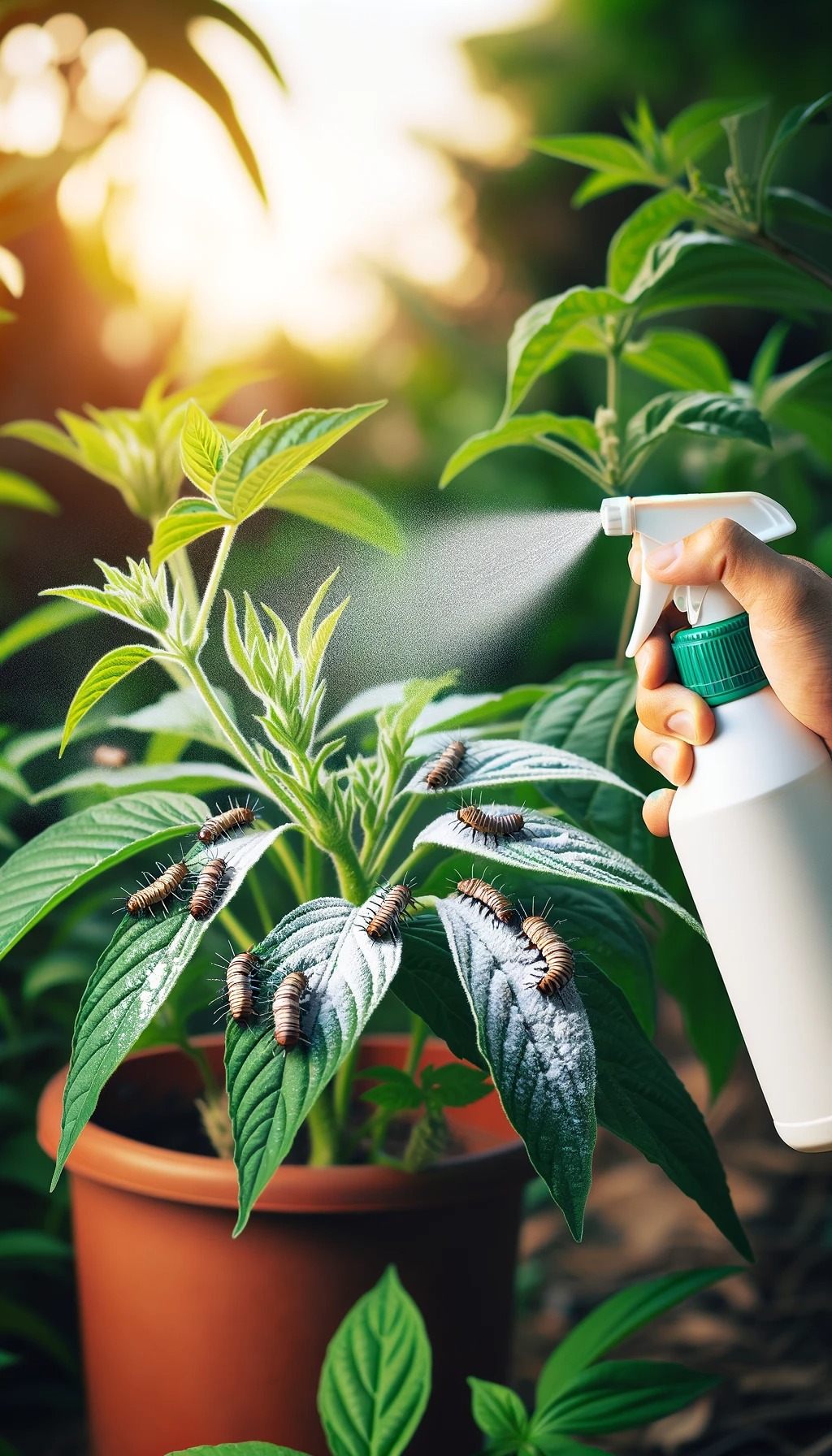ADVERTISEMENT
- Create the Solution: Mix 1 tablespoon of mild liquid dish soap (preferably one that is free from harsh chemicals) in a quart of water.
- Spray on Affected Areas: Use a spray bottle to apply the soapy water directly to the pests. Be sure to cover both the tops and bottoms of leaves.
- Rinse After Application: After about an hour, rinse your plants with clean water to avoid any soap residue that may harm the plant.
7. Use Row Covers or Netting
Physical barriers like row covers or garden netting are an effective way to protect plants from insects without using any chemicals. These coverings prevent pests from landing on your plants while still allowing sunlight, air, and water to reach them.
How to Do It:
- Install Row Covers: Drape row covers (lightweight fabric) over your plants, securing the edges with soil or stakes to prevent insects from sneaking underneath.
- Use Mesh Netting: For larger plants or fruits, mesh netting can provide an effective barrier against flying pests like moths or beetles.
8. Practice Crop Rotation
Crop rotation is a gardening technique where you move plant families around in different parts of your garden each year. This prevents insects from becoming accustomed to certain plants and helps minimize pest outbreaks.
How to Do It:
- Move Plants: Rotate your crops annually to avoid growing the same plant family in the same location. For example, if you grew tomatoes in one area this year, plant them in a different spot next year.
9. Attract Birds
Birds can be a natural form of pest control, as they love to snack on insects. Encouraging birds to visit your garden can help reduce the population of harmful pests like beetles and caterpillars.
How to Do It:
- Install Bird Feeders: Place bird feeders around your garden to attract various species of birds. Be sure to offer a variety of food types, such as seeds, nuts, and berries.
- Provide Water: Set up a birdbath or shallow water source to keep birds hydrated and encourage them to stay around.
10. Handpick Pests
For a more hands-on approach, simply check your plants regularly and manually remove pests. While this method is labor-intensive, it can be quite effective for small infestations.
How to Do It:
- Inspect Your Plants: Regularly check both sides of leaves and around stems for visible pests. For larger pests like caterpillars or beetles, pick them off by hand and remove them from your garden.
- Use a Bucket of Soapy Water: Drop any insects you collect into a bucket of soapy water to kill them.
Final Thoughts
Protecting your plants from insects doesn’t have to mean relying on toxic chemicals. By using natural methods, you can create a healthy, thriving garden that’s both pest-free and eco-friendly. Whether you choose to attract beneficial insects, use homemade sprays, or employ physical barriers, these natural solutions can help you safeguard your plants while maintaining a balanced and sustainable ecosystem in your garden. Try a combination of these methods and watch your garden flourish—pest-free and chemical-free!
